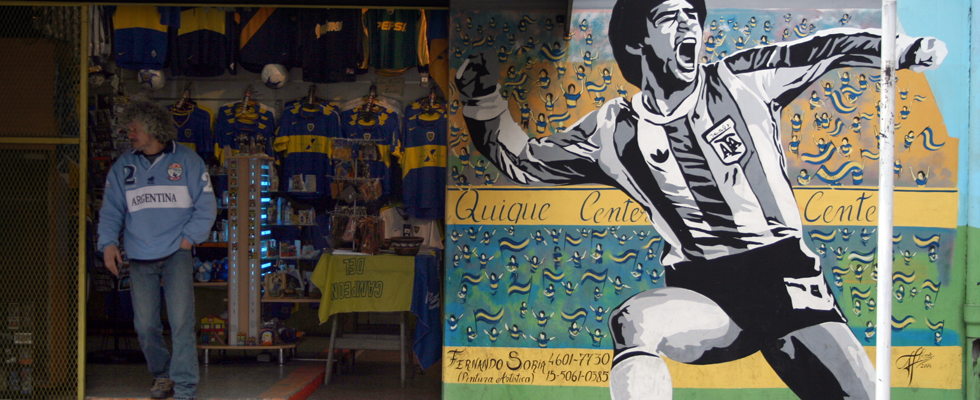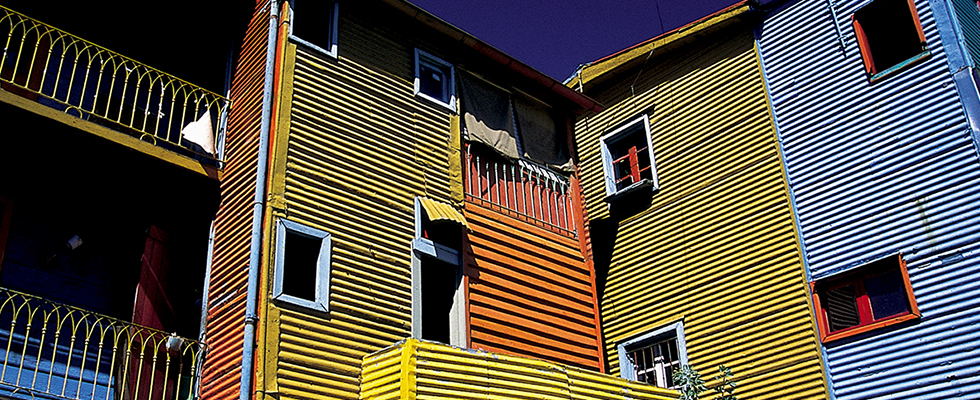2.00pm | Italian footprints in La Boca
Present in tours
There's not a single social, political, economic, cultural or artistic sphere in Argentina that did not receive some influence from Italy, and one of the areas to feel that influence is in La Boca. Many Italian immigrants, particularly from Genoa, settled in this neighbourhood at the end of the 19th century and left an indelible imprint. There were so many Italians living here at one time, that a unique local dialect emerged: cocoliche – a mixture of Spanish and Italian spoken by the first immigrants and named after a Neapolitan who lived in La Boca. Italian immigrants had a profound influence on the fileteado artistic style, still very visible in La Boca, as well as on the theatre, tango and of course football, with descendents of Genoese immgrants founding the legendary Boca Juniors football club.
La Bombonera
Boca Juniors football stadium at Brandsen 805.
The "impulso" arts group
This NGO, located at Gral. Gregorio Aráoz de Lamadrid 355, was founded in 1940 by a group of artists, many of them Italian. Led by Fortunato Lacámera, and including Juan Carlos Miraglia, José Pugliese, Arturo Maresca, Carlos Porteiro, Antonio Carotenuto, Vicente Vento, Mateo Scagliarini, José Rosso, Orlando Stagnaro and José Luis Menghi, the group aimed to organise activities to promote the arts in the neighbourhood, maintaining an art gallery and library on this site. Accroding the group's statute, it must hold periodic exhibitions, promote the publication of works of literatura, and the teaching of artistic disciplines, publish its own newsletter and form links with similar organisations.
La Boca volunteers' fire station
Following a devastating fire in 1884, a group of Italian residents led by Don Tomás Liberti drew up a manifesto, written in Italian, proposing construction of this, the first fire station in the country. It proved to be essential in a neighbourhood that comprised largely precarious homes built from easily inflammable materials, and the volunteer firefighters became an important symbol of the neighbourhood.
Moving on:


